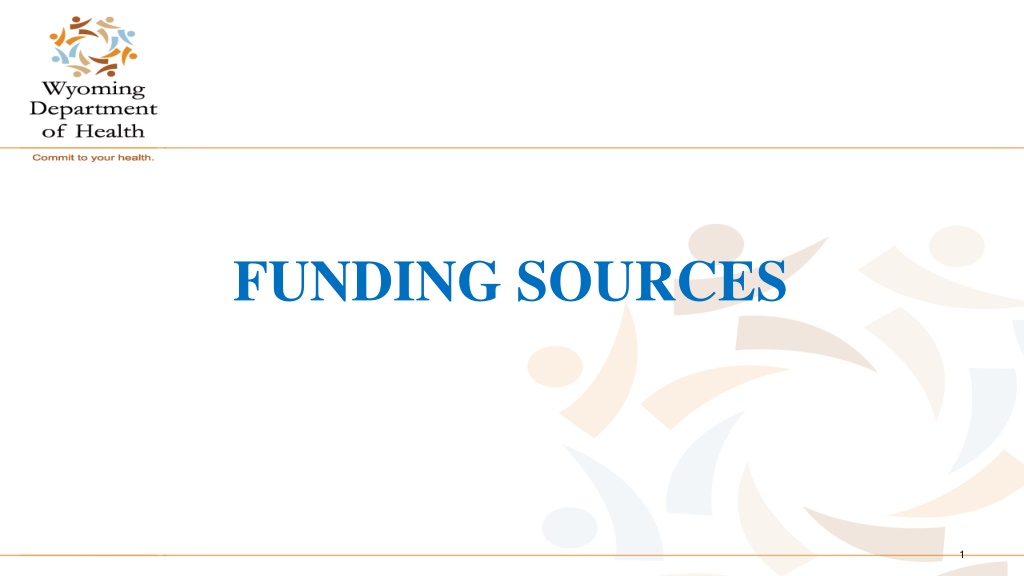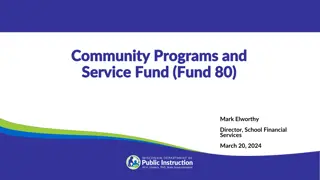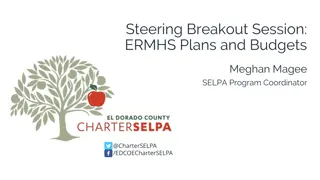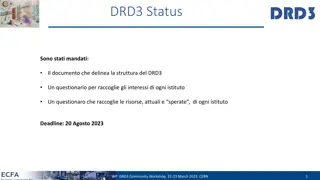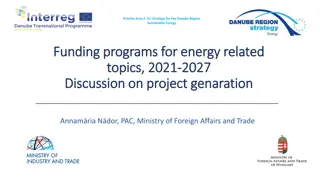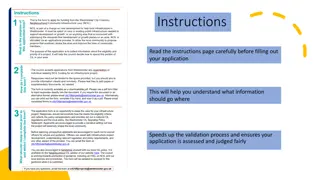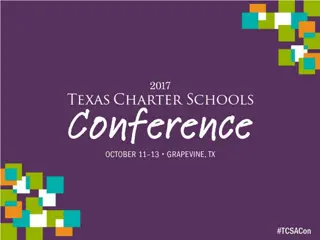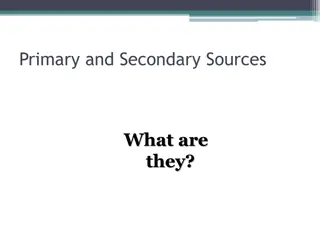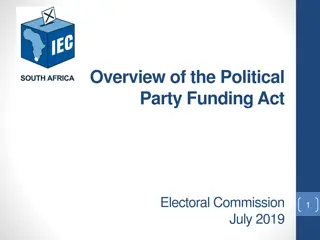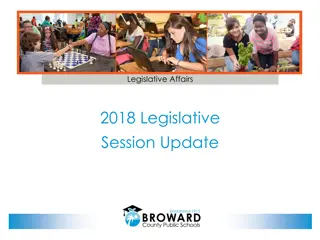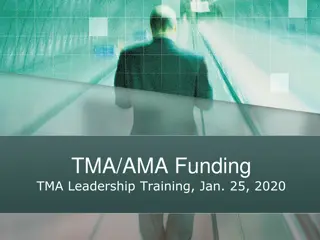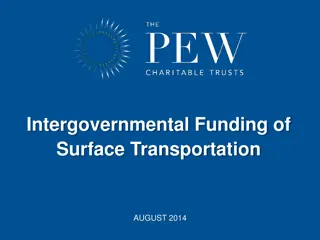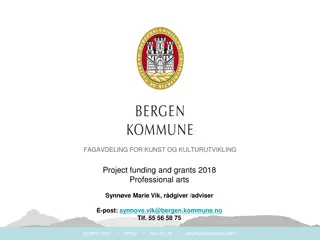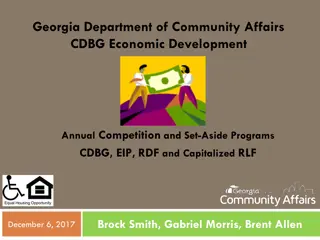Understanding Funding Sources for Community Programs
Federal and state funds allocated under the Older Americans Act support community programs administered by the Administration on Community Living. Program income, voluntary contributions, and grants from clients further supplement and expand services. Proper utilization of different funding sources is crucial for sustaining and enhancing program offerings.
Download Presentation

Please find below an Image/Link to download the presentation.
The content on the website is provided AS IS for your information and personal use only. It may not be sold, licensed, or shared on other websites without obtaining consent from the author. Download presentation by click this link. If you encounter any issues during the download, it is possible that the publisher has removed the file from their server.
E N D
Presentation Transcript
Funding Sources FEDERAL funds, authorized by Congress under the Older Americans Act (OAA), are administered by the Administration on Community Living (CLS) in Washington, D.C. Individual states are allocated a portion of this funding based on census data. STATE funds, through the Wyoming Department of Health, Aging Division, Community Living Section are appropriated each biennium by the Wyoming Legislature. The funds are budgeted to specific programs, and must be used for the purposes intended by the legislature.
Funding Sources Grants (Federal and State Funds) Program Income Local Match (including Cash/In-Kind)
Funding Sources Voluntary Contribution Older Americans Act (OAA) section 315: clearly inform each recipient that there is no obligation to contribute and that the contribution is purely voluntary provide each recipient with an opportunity to voluntarily contribute to the cost of the service voluntary contributions may be solicited for services IF the method of solicitation is non-coercive Do not send out Bills, invoices or demand notice of payment Statements are the only form that may be sent to a client requesting a contribution
Funding Sources Program Income Based on information ascertained from the Administration on Community Living and in accordance with CFR 45 (Code of Federal Regulation), Program Income will be utilized for expansion of services. 92.21 PAYMENT 92.21(f)(2) Grantees and sub grantees shall disburse program income, rebates, refunds, contract settlements, audit recoveries and interest earned on such funds before requesting additional cash payments. 92.25 PROGRAM INCOME (a) General. Grantees are encouraged to earn income to defray program cost. Program income includes income from fees for services performed, from the use or rental of real or personal property acquired with grant funds, from the sale of commodities or items fabricated under a grant agreement. (b) Definition of Program Income. Program income means gross income received by the grantee or sub grantee directly generated by a grant supported activity, or earned only as a result of the grant agreement during the grant period.
Grants and Funding Program Income Funds that are received from clients for the service they are receiving These funds must be expended first to supplement and expand the program Examples Suggested contributions from eligible consumers Designated donations
Funding Source Local Match What is Local Match? The non-federal share of cost that the grantee is required to contribute to accomplish the purpose of the grant. What are limitations of local match? Local match must be from non-federal sources This means, local match cannot be from any federal or state funding sources Exception: Wyoming Senior Services Board funding may be used for match The same cash, effort and /or goods cannot be used to match more than one project. Matching funds may include: Non-federal public or private funds Funds that are not used as match for any other federal program Is either the grantee organization s own funds (general revenue) or cash donations from non-federal third parties (i.e. partner organizations).
Funding Source In-Kind In-Kind Match Contribution Form of the value of personnel, goods, and services. Grantees and third parties must document the contributed resource of value. For Example: Volunteer Services Description of the activity Date of the activity Name and signature of a volunteer Number of hours worked
